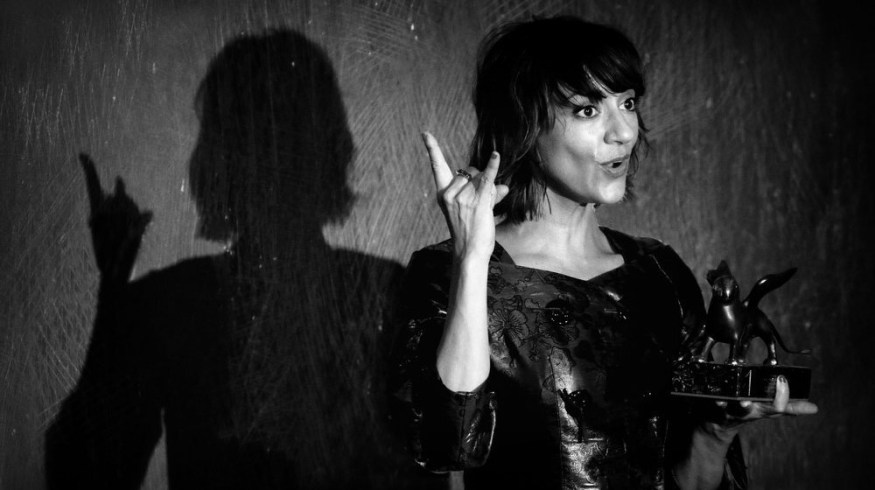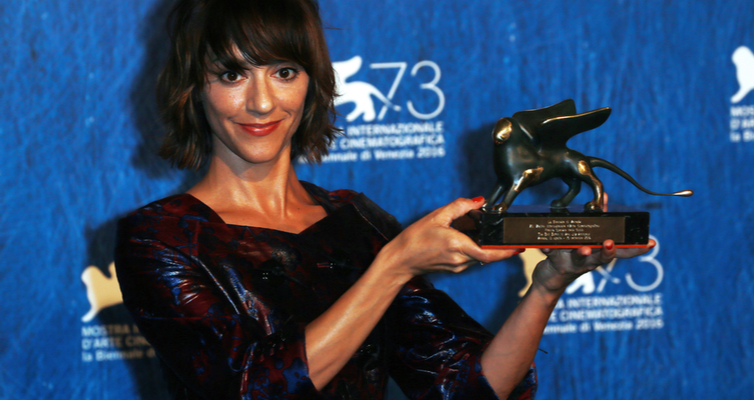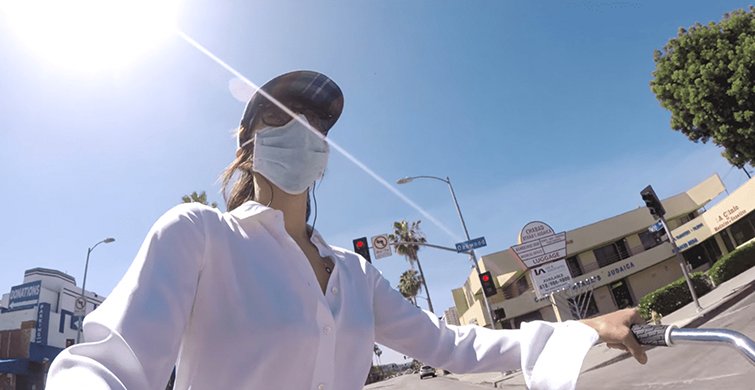
How Filmmaker Ana Lily Amirpour Teaches Us to Just Friggin’ Go for It
Ana Lily Amirpour — a productive, non-conventional filmmaker — teaches us a thing or two about filmmaking. Let’s look at her approach and unique techniques.
In a 2017 interview about her sophomore feature film The Bad Batch, filmmaker Ana Lily Amirpour described working with actor Suki Waterhouse.
It’s like going up Everest. Like, if you want to go up Everest, you gotta pick your climbing buddy, ya know? And, it’s gonna be gnarly to go up Everest.
She goes on to describe filmmaking as an absurd exercise in pain, an endeavor only a handful of “insane” individuals ever embark on.
I love this take. She illustrates, so tidily, not only the clarity and focus required to will a film into existence, but also the importance of gathering a group of peers who are down. Filmmakers like Ana Lily Amirpour need peers who are “down to do the thing,” as she’s a shining example of a creator who just friggin’ goes for it.

Clarity and focus are much-needed elements in filmmaking. Image via NEON.
For those not yet familiar with this contemporary American filmmaker, Ana Lily Amirpour is the writer and director of the 2014 Farsi-language horror-romance A Girl Walks Home Alone at Night and 2016′ s The Bad Batch, a dystopian, carceral hellscape/fairy tale.
She’s an auteur with confidence rooted in substance. She knows “weird can work” and follows through to make weird real. As a fan of her thematically direct and color-imbued body of work, I regard her approach highly, and I feel every scrappy, aspiring filmmaker can learn from it. In this post, I’ll list just three of the many ways Amirpour embodies what it truly means to just go for it.
1. A “No” Is Permission to Go Do it Yourself

Sometimes you have to tackle the project entirely on your own. Image via NEON.
While speaking with Berlinale Talents, a program organized by The Berlin International Film Festival for emerging filmmakers, Ana Lily Amirpour described her experience studying at UCLA.
She asked the school for the funding and equipment access she needed to make her first short, Six and a Half. UCLA politely declined, because, while she was studying screenwriting at the time, producing the short was not a class assignment.
So, naturally, she did it herself, bartering time and efforts with her contemporaries and paying for film materials with her own money.
It’s true what they say — nothing worth doing is easy. If you want to make something worthwhile, you need to put some skin in the game. Luckily, you don’t have to play someone else’s game to win.
Amirpour threw down her own money for the film and decided she would show up for her peers when they needed her. And because she put in the work, those peers showed up for her.
2. If You Think Something Is Dumb, it Probably Is

Amirpour won the Special Jury Prize at the 2016 Venice Film Festival for her film The Bad Batch. Image via Matteo Chinellato.
In 2014, Amirpour and actor Sheila Vand sat with Eddy Moretti of VICE to chat about her then-new film A Girl Walks Home Alone At Night — or as she affectionately refers to the film, Girl.
In the interview, the director recounts her experience working on a short film in Berlin, a five-month-long production combining live-action footage and stop-motion.
“At the end of this five months in Berlin, I was, like, I could have just shot a feature. Like, this is so dumb,” Amirpour said.
She goes on to tell Moretti that she had two other projects she’d attempted to get made the “regular way,” with producers, pitches, and the nebulous cycle of contorting for others. After her experience in Berlin, she was officially unimpressed with the regular way. She took that energy and threw herself into making Girl, determined to make it on her own terms.
Amirpour’s Berlin-and-back experience must have been transformative, as it was then that she found her stride. She demonstrates the value of perspective, the importance of clearing away all things “dumb” that obstruct one’s vision. To gain that matrix-code perspective, you need to recognize that which is stupid, that which you know in your heart serves no purpose, and toss it out the window.
3. Grab Your Idea the Moment You Know it Works

When an idea comes, just jump right in. Image via Kino Lorber.
Perhaps my favorite principle of Amirpour’s approach to filmmaking is her willingness to grab an idea when it’s good. Sometimes, when you think of something great, you may only see a small part of the whole picture in your head. And that’s okay. You don’t need to flesh out the full idea to start engaging with it. Just jump right in.
Whenever asked how she first came up with the concept for Girl, Amirpour gives the same brief, simple answer.
While working on another short film with Vand, she put on a chador that was to be used as a costume for an extra. She describes feeling like a stingray while wearing the long, flowing head-covering, and recalls the immediate urge to be on a skateboard with it on.
“Of course, this is an Iranian vampire,” she told Vice. “This is it. Nobody’s thought of this?”
That simple image, then still new and loosely formed, sparked the genesis of Girl. Similarly, Amirpour says the idea for The Bad Batch came from a very simple image in her mind — a girl bleeding and left to die in the middle of the desert — a visual representation of a rough patch of her life she’d been experiencing.
A Girl Walks Home Alone At Night and The Bad Batch both began as imagea in Ana Lily Amirpour’s mind. She may have not known where these ideas would take her, but she knew they could encapsulate something worth saying. In the case of The Bad Batch, that single image of a dying, determined girl left to her own devices in the middle of nowhere grew into a rich concept — an allegory for, as the filmmaker often puts it, “how we’re all eating each other.”
When a filmmaker knows they’ve got something substantial, they poke at it with the stick of “intent” and follow it down whichever hole it scurries into. Naturally, some concepts will be half-baked and go nowhere, but if you know in your gut that an idea has legs, you have to run with it.
Get to Know Lily

Amirpour’s short for the quarantine-themed anthology, Homemade, was released this summer. Image via Netflix.
Ana Lily Amirpour (Lily, as those close to her call her ) is certainly a filmmaker to keep your eye on, and in this humble fan’s opinion, she’s also one to look up to.
Her most recent feature-length project — Mona Lisa and the Blood Moon — will soon begin post-production, and she’s been tapped to direct a remake of the 90s action-adventure Cliffhanger. She has also recently created the short Ride It Out for Netflix’s quarantine-themed anthology Homemade.
If you aren’t familiar with her body of work, I strongly encourage you to explore it. Even if gritty themes and violence aren’t in your wheelhouse, Amirpour’s films are an effusive example of film heritage beamed through the prism of an intentional mind. That, in and of itself, makes her filmography worth the watch. I also encourage aspiring filmmakers to be like Lily — just friggin’ go for it.
Cover image via Matteo Chinellato/Ipa/Shutterstock.




